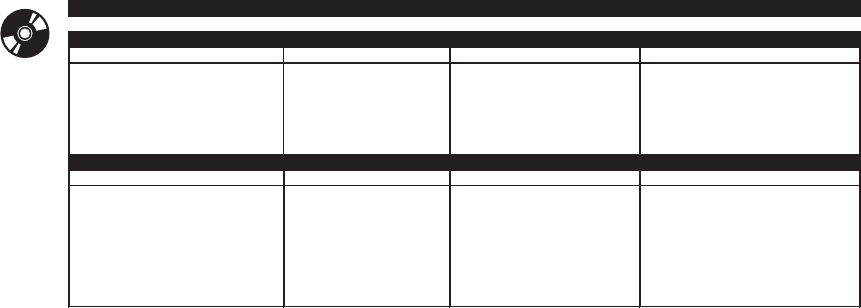224 THE GAME PRODUCTION HANDBOOK, 2/E
Platform
Platform refers to what hardware is used to play the game, such as a PC, Microsoft
Xbox 360, Nintendo DS, or a cell phone handset. The platform difference, such
as controller configurations and technical limitations, influence the game design.
For example, a game designed for a cell phone will not feature cutting-edge
graphics or technology. Cell phone games are less complex and easy to complete
when the player only has a few minutes to spare. A PC game has cutting-edge
graphics and a more complex controller scheme. Gameplay requires a much
longer time commitment.
When games are released on multiple platforms, consider what game design
elements work best with each platform and tailor the design accordingly. With
consoles, players expect a game that caters to their platform of choice, instead
of playing a game designed for a PC that’s been ported to an Xbox 360, and vice
versa. Here’s an example of how the design for Justice Unit would change for
different platforms:
PC: A PC-based version of Justice Unit would feature customizability as a
primary feature, enabling the player to create new enemies, maps, and mis-
sion types.
Nintendo DS: As a DS game, Justice Unit would be a simple, easy-to-learn
FPS with a layout similar to Metroid Prime. The player would progress
through several levels, fighting bank robbers and super villains.
Xbox 360: As an Xbox 360 game, Justice Unit is an explosive action title fea-
turing fast-paced action sequences and team-based multiplayer. Key selling
points include the immersive first-person perspective, dozens of multiplayer
modes, and a story-driven single-player campaign.
SWOT Analysis
A SWOT analysis, which stands for Strengths, Weaknesses, Opportunities, and
Threats, identifies the strengths and weaknesses of your game’s concept, market
opportunities, and any threats that might impact the game’s success.
Begin an initial SWOT analysis by identifying a game that is potential com-
petition. It can be a game in a similar genre or with similar gameplay features,
a game that appeal to your target audience, or a game based on similar licenses.
After you’ve determined who the competition is, analyze the strengths and
weakness. Use this information to compare your game’s strengths and weak-
nesses against the competition’s. When you can clearly define what your game’s
strengths and weaknesses are, you are able to figure out ways to exploit or neu-
tralize them accordingly. This information contributes to a solid game design
and provides the basis for the game’s marketing strategy.
GAME CONCEPT 225
Strengths and weaknesses are internal influences that you have some control
over. Threats and opportunities identify external influences on the project that
are beyond your control. For example, your game might be a launch title for a
new platform—a strength since you could choose to develop for another platform.
This is also an opportunity since the console manufacturer will cross-promote your
game when marketing the new console platform. Conversely, if you are working
on an MMO that doesn’t offer any unique features that set it apart from World of
Warcraft, that is a weakness since you have some control over the game content
and feature set. However, if you are working on an MMO that is in a unique set-
ting, but it ships the same day that World of Warcraft releases an expansion pack,
this is a threat since you have no control over the release dates for other games.
Here is a list of topics to start thinking about when doing your SWOT
analysis:
strengths weaknesses
■
Core features
■
Lack of team experience
■
Innovative features
■
Lack of competitive features
■
Player capabilities
■
No innovation
■
Unique selling points (USPs)
■
Platform choice
■
Production values
■
Poor company reputation
■
Licensing tie-in
■
Financial issues
■
Price points
■
Schedule and deadlines
■
Appeal to demographics
■
Resource availability
■
International Appeal
■
Lack of team morale
■
Potential revenue streams
■
Poor leadership
■
Marketing tie-ins
■
Franchise tie-ins
■
Console bundle potential
■
Multi-platform potential
■
Team experience
opportunities threats
■
Lifestyle or industry trends
■
Political influences
■
Technical innovations
■
Competitor’s strengths
■
Market trends
■
Competitor’s release dates
■
Competitors’ weaknesses
■
Waning market demand
■
Globalization
■
Loss of key staff
■
Target market
■
Loss of financial backing
■
Niche target markets
■
Technical innovations
■
Partnerships
■
Middleware trends
■
Release dates

226 THE GAME PRODUCTION HANDBOOK, 2/E
Figure 14.1 is a form that can be used to conduct a SWOT analysis. When
doing the analysis, it is equally important to define how you are going to exploit any
strengths and opportunities, and neutralize any weaknesses or threats. The SWOT
analysis will become part of the game plan and is updated throughout production.
The SWOT analysis should be completed during the first few weeks of pre-
production so everyone on the team has a full understanding of the competi-
tion and challenges, as this will affect the choices for the game’s feature set and
development strategy. Appoint one person to head up this analysis, such as an
associate producer, or even the producer. This person needs to get input from
the development team and the marketing department.
Competitive Analysis
In addition to a SWOT analysis, you will also want to conduct a full competi-
tive analysis of all current and future competition. This competitive analysis is
especially important if you are pitching a game to a publisher. By presenting a
competitive analysis as part of your pitch, you demonstrate that you know the
market and how you can differentiate your game from the others.
A competitive analysis contains some information that is similar to the SWOT
analysis. For example, the competitive analysis will highlight the strengths and
weaknesses of the competitor’s game. In addition this analysis will also list other
pertinent information such as sales figures (if available), average review scores,
and any key features that really make it stand apart from other games. All of this
information helps give you a better idea of how strong the competition is, and
what you need to do in order to present your game in the best light. Figure 14.2
is an example of a competitive analysis spreadsheet.
O
N
T
H
E
C
D
FIGURE 14.1 SWOT analysis form.
The primary competition for Justice Unit is PostMortal, a first-person shooter set in a superhero universe.
Our Strengths How to Exploit Our Opportunities How to Exploit
Compared against rival PostMortal,
Justice Unit features a strong
multiplayer experience, including a
customizable multiplayer avatar,
dozens of gameplay types, and several
maps.
Emphasize these features in
the marketing plan.
Justice Unit will launch at the
same time as the movie sequel,
which will garner additional
attention for the game.
Cross-promote game and movie -
create a separate story for the game
that intersects with some plot points in
the movie.
Our Weaknesses How to Neutralize Our Threats How to Neutralize
Justice Unit features a free-roaming,
nonlinear single-player experience,
which will not deliver the same thrills as
the linear, heavily scripted PostMortal.
Downplay this feature in the
marketing plan and focus on
the multiplayer features.
PostMortal is scheduled to release
2 months before Justice Unit and
this may have a negative impact
on sales - people may buy the
PostMortal superhero game
instead of Justice Unit.
Build early buzz about the player's
ability to play as their favorite character
from the Justice Unit. Sponsor a create
an enemy contest, where the winner
gets to meet the cast of the movie and
get an advance copy of the game.
SWOT ANALYSIS
INTERNAL FACTORS
EXTERNAL FACTORS

GAME CONCEPT 227
Approval
After the basic concept information is defined and a SWOT analysis is con-
ducted, put together a summary document and present it to all interested parties
for approval. If the publisher likes the direction you are going, they might make
a few minor suggestions and let you continue working. However, if the concept
is veering away from what the publisher envisioned, they might request major
changes and ask you to present to them again. If you are working on a two-year
development cycle, plan to schedule this initial approval meeting about two to
three weeks after starting pre-production. If working on a six-month project, try
to have this meeting about one week after starting pre-production.
Getting approval at this stage is important, as it can save you work. If you
continue to define the concept and write up design documents, you might find
that your team spent months putting all this information together, only to find
that it is not what the publisher or studio management envisioned. And since
they are footing the bill for game development, it is best to make sure the team
is delivering the type of game they want.
Schedule a meeting for all the stakeholders and present what information
you have so far. Involve other key members of the team in this meeting so
they are on hand to answer any questions, and so they can hear the feedback
firsthand. Be sure to take accurate notes at the meeting, post them for the team
to review, and follow up on any action items.
FIGURE 14.2 Sample competitive analysis spreadsheet.
Game Developer Publisher Platforms
Est. Release
Date
Game Summary Features
Avg.
Review
Sales
Figures
PostMortal
Funtime
Studios
A-1
Publishing
Xbox360,
PS3
Oct-09
PostMortal is a new IP
about superheroes. It is a
third-person action-
adventure game and the
player assumes the role
of Avenger Boy. Other
superheroes will be in the
game, but the player only
controls a single hero
throughou the game. The
game features features
traditional costumed
superhereos in a 1950's
world setting. Avenger
Boy will band together
with the other heroes to
battle Dr. No Good.
*Avenger Boy is main
player character.
*New IP that has no
cross-over appeal
*Limited multiplayer
modes, although it will
have a small online co-
op campaign.
*Traditional third-person
action-adventure,
uniqueness is based on
settings and characters
*Each character has one
unique superpower they
can use against the
enemy. They will help in
the game if their
assistance is requested
by the player.
n/a n/a

228 THE GAME PRODUCTION HANDBOOK, 2/E
DESIGN CONSTRAINTS
Clint Hocking, Creative Director
Ubisoft
The best constraint to take into account when creating a concept and initial de-
sign is to not think about features and content. You need to define what your game
is about, not how many levels you have or how many guns you have and what their
alt-fire is. You need to know what your game is about in the broadest strokes, and
you need to be able to represent that with some kind of simple system diagram. You
don’t need to know what it’s about in terms of its story; you do need to know what
it’s about in terms of its systems. That concept needs to be beautiful and elegant,
because it is the foundation of your entire game. When you are confident that your
high-level concept is strong, then you can start to think about the mechanics and dy-
namics that support the high-level concept. Your features and content should then
flow naturally out of those mechanics and dynamics. If you do it this way, you should
not have problems limiting your content and features to a meaningful set. Ideas are
cheap, but harmony among ideas is really hard to achieve. If you start with a random
collection of good ideas and try to build a concept from the bottom up, you will not
have a harmonious whole. If you start with a vision of the whole and then support it
robustly with the systems that it requires, then you probably will not have to worry
about limiting yourself for schedule or resources.
On Chaos Theory I worked very closely with the marketing manager to under-
stand the needs of the audience and to communicate his vision of the game. There was
a definite synthesis of ideas that took place there. The concept of Chaos Theory—of
small actions having potentially large repercussions—as well as the Closer Than Ever
system in the game and the systems that support them came about through lengthy
discussions between design and marketing (and others). They arose from both the
need to have expressive, unified, and robust systems, as well as from the need to dif-
ferentiate the title from the competition and strengthen the franchise and the brand
where it was weak. The game’s marketing bullet points are concepts like tension,
freedom, cinematic quality, and meaningful choices. These come from that initial
collaboration between marketing and design. Some people take shots at that idea and
say that makes me a marketing-driven designer and that designers who design for the
market are simply rehashing the same old proven designs and not bringing anything
new. Those people compare the bullet points mentioned previously with the more
standard bullet points of “20 different weapons,” “3 playable races,” “5 different alien
worlds.” Design needs to work closely with marketing, if only to make sure that mar-
keting understands what your game is actually about so they can communicate it and
help create the need for more meaningful, less derivative games.
..................Content has been hidden....................
You can't read the all page of ebook, please click here login for view all page.
